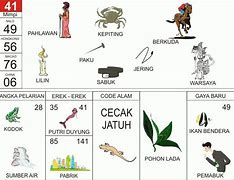
Google's web mapping service (launched 2005)
Screenshot of Google Maps in a web browser
Afrikaans, Azerbaijani, Indonesian, Malay, Bosnian, Catalan, Czech, Danish, German (Germany), Estonian, English (United States), Spanish (Spain), Spanish (Latin America), Basque, Filipino, French (France), Galician, Croatian, Zulu, Icelandic, Italian, Swahili, Latvian, Lithuanian, Hungarian, Dutch, Norwegian, Uzbek, Polish, Portuguese (Brazil), Portuguese (Portugal), Romanian, Albanian, Slovak, Slovenian, Finnish, Swedish, Vietnamese, Turkish, Greek, Bulgarian, Kyrgyz, Kazakh, Macedonian, Mongolian, Russian, Serbian, Ukrainian, Georgian, Armenian, Hebrew, Urdu, Arabic, Persian, Amharic, Nepali, Hindi, Marathi, Bengali, Punjabi, Gujarati, Tamil, Telugu, Kannada, Malayalam, Sinhala, Thai, Lao, Burmese, Khmer, Korean, Japanese, Simplified Chinese, Traditional Chinese
Google Maps is a web mapping platform and consumer application offered by Google. It offers satellite imagery, aerial photography, street maps, 360° interactive panoramic views of streets (Street View), real-time traffic conditions, and route planning for traveling by foot, car, bike, air (in beta) and public transportation. As of 2020[update], Google Maps was being used by over one billion people every month around the world.[1]
Google Maps began as a C++ desktop program developed by brothers Lars and Jens Rasmussen in Australia at Where 2 Technologies. In October 2004, the company was acquired by Google, which converted it into a web application. After additional acquisitions of a geospatial data visualization company and a real-time traffic analyzer, Google Maps was launched in February 2005.[2] The service's front end utilizes JavaScript, XML, and Ajax. Google Maps offers an API that allows maps to be embedded on third-party websites,[3] and offers a locator for businesses and other organizations in numerous countries around the world. Google Map Maker allowed users to collaboratively expand and update the service's mapping worldwide but was discontinued from March 2017. However, crowdsourced contributions to Google Maps were not discontinued as the company announced those features would be transferred to the Google Local Guides program,[4] although users that are not Local Guides can still contribute.
Google Maps' satellite view is a "top-down" or bird's-eye view; most of the high-resolution imagery of cities is aerial photography taken from aircraft flying at 800 to 1,500 feet (240 to 460 m), while most other imagery is from satellites.[5] Much of the available satellite imagery is no more than three years old and is updated on a regular basis, according to a 2011 report.[6] Google Maps previously used a variant of the Mercator projection, and therefore could not accurately show areas around the poles.[7] In August 2018, the desktop version of Google Maps was updated to show a 3D globe. It is still possible to switch back to the 2D map in the settings.
Google Maps for mobile devices were first released in 2006; the latest versions feature GPS turn-by-turn navigation along with dedicated parking assistance features. By 2013, it was found to be the world's most popular smartphone app, with over 54% of global smartphone owners using it.[8] In 2017, the app was reported to have two billion users on Android, along with several other Google services including YouTube, Chrome, Gmail, Search, and Google Play.
Google Maps first started as a C++ program designed by two Danish brothers, Lars and Jens Eilstrup Rasmussen, and Noel Gordon and Stephen Ma, at the Sydney-based company Where 2 Technologies, which was founded in early 2003. The program was initially designed to be separately downloaded by users, but the company later pitched the idea for a purely Web-based product to Google management, changing the method of distribution.[9] In October 2004, the company was acquired by Google Inc.[10] where it transformed into the web application Google Maps. The Rasmussen brothers, Gordon and Ma joined Google at that time.
In the same month, Google acquired Keyhole, a geospatial data visualization company (with investment from the CIA), whose marquee application suite, Earth Viewer, emerged as the Google Earth application in 2005 while other aspects of its core technology were integrated into Google Maps.[11] In September 2004, Google acquired ZipDash, a company that provided real-time traffic analysis.[12]
The launch of Google Maps was first announced on the Google Blog on February 8, 2005.[13]
In September 2005, in the aftermath of Hurricane Katrina, Google Maps quickly updated its satellite imagery of New Orleans to allow users to view the extent of the flooding in various parts of that city.[14][15]
As of 2007, Google Maps was equipped with a miniature view with a draggable rectangle that denotes the area shown in the main viewport, and "Info windows" for previewing details about locations on maps.[16] As of 2024, this feature had been removed (likely several years prior).
On November 28, 2007, Google Maps for Mobile 2.0 was released.[17][18][19] It featured a beta version of a "My Location" feature, which uses the GPS / Assisted GPS location of the mobile device, if available, supplemented by determining the nearest wireless networks and cell sites.[18][19] The software looks up the location of the cell site using a database of known wireless networks and sites.[20][21] By triangulating the different signal strengths from cell transmitters and then using their location property (retrieved from the database), My Location determines the user's current location.[22]
On September 23, 2008, coinciding with the announcement of the first commercial Android device, Google announced that a Google Maps app had been released for its Android operating system.[23][24]
In October 2009, Google replaced Tele Atlas as their primary supplier of geospatial data in the US version of Maps and used their own data.[25]
On April 19, 2011, Map Maker was added to the American version of Google Maps, allowing any viewer to edit and add changes to Google Maps. This provides Google with local map updates almost in real-time instead of waiting for digital map data companies to release more infrequent updates.
On January 31, 2012, Google, due to offering its Maps for free, was found guilty of abusing the dominant position of its Google Maps application and ordered by a court to pay a fine and damages to Bottin Cartographer, a French mapping company.[26] This ruling was overturned on appeal.[27]
In June 2012, Google started mapping the UK's rivers and canals in partnership with the Canal and River Trust. The company has stated that "it would update the program during the year to allow users to plan trips which include locks, bridges and towpaths along the 2,000 miles of river paths in the UK."[28]
In December 2012, the Google Maps application was separately made available in the App Store, after Apple removed it from its default installation of the mobile operating system version iOS 6 in September 2012.[29]
On January 29, 2013, Google Maps was updated to include a map of North Korea.[30] As of May 3, 2013[update], Google Maps recognizes Palestine as a country, instead of redirecting to the Palestinian territories.[31]
In August 2013, Google Maps removed the Wikipedia Layer, which provided links to Wikipedia content about locations shown in Google Maps using Wikipedia geocodes.[32]
On April 12, 2014, Google Maps was updated to reflect the annexation of Ukrainian Crimea by Russia. Crimea is shown as the Republic of Crimea in Russia and as the Autonomous Republic of Crimea in Ukraine. All other versions show a dotted disputed border.[33]
In April 2015, on a map near the Pakistani city of Rawalpindi, the imagery of the Android logo urinating on the Apple logo was added via Map Maker and appeared on Google Maps. The vandalism was soon removed and Google publicly apologized.[34] However, as a result, Google disabled user moderation on Map Maker, and on May 12, disabled editing worldwide until it could devise a new policy for approving edits and avoiding vandalism.[35]
On April 29, 2015, users of the classic Google Maps were forwarded to the new Google Maps with the option to be removed from the interface.[36]
On July 14, 2015, the Chinese name for Scarborough Shoal was removed after a petition from the Philippines was posted on Change.org.[37]
On June 27, 2016, Google rolled out new satellite imagery worldwide sourced from Landsat 8, comprising over 700 trillion pixels of new data.[38] In September 2016, Google Maps acquired mapping analytics startup Urban Engines.[39]
In 2016, the Government of South Korea offered Google conditional access to the country's geographic database – access that already allows indigenous Korean mapping providers high-detail maps. Google declined the offer, as it was unwilling to accept restrictions on reducing the quality around locations the South Korean Government felt were sensitive (see restrictions on geographic data in South Korea).[40]
On October 16, 2017, Google Maps was updated with accessible imagery of several planets and moons such as Titan, Mercury, and Venus, as well as direct access to imagery of the Moon and Mars.[41][42]
In May 2018, Google announced major changes to the API structure starting June 11, 2018. This change consolidated the 18 different endpoints into three services and merged the basic and premium plans into one pay-as-you-go plan.[43] This meant a 1400% price raise for users on the basic plan, with only six weeks of notice. This caused a harsh reaction within the developers community.[44] In June, Google postponed the change date to July 16, 2018.
In August 2018, Google Maps designed its overall view (when zoomed out completely) into a 3D globe dropping the Mercator projection that projected the planet onto a flat surface.[45]
In January 2019, Google Maps added speed trap and speed camera alerts as reported by other users.[46][47]
On October 17, 2019, Google Maps was updated to include incident reporting, resembling a functionality in Waze which was acquired by Google in 2013.[48]
In December 2019, Incognito mode was added, allowing users to enter destinations without saving entries to their Google accounts.[49]
In February 2020, Maps received a 15th anniversary redesign.[50] It notably added a brand-new app icon, which now resembles the original icon in 2005.
On September 23, 2020, Google announced a COVID-19 Layer update for Google maps, which is designed to offer a seven-day average data of the total COVID-19-positive cases per 100,000 people in the area selected on the map. It also features a label indicating the rise and fall in the number of cases.[51]
In January 2021, Google announced that it would be launching a new feature displaying COVID-19 vaccination sites.[52]
In January 2021, Google announced updates to the route planner that would accommodate drivers of electric vehicles. Routing would take into account the type of vehicle, vehicle status including current charge, and the locations of charging stations.[53]
In June 2022, Google Maps added a layer displaying air quality for certain countries.[54]
In September 2022, Google removed the COVID-19 Layer from Google Maps due to lack of usage of the feature.[55]
Mampu Menjangkau Orang-orang di Perjalanan
Pertama, Google Maps bukan hanya sekadar aplikasi navigasi. Tetapi juga mobile yang berarti Anda menjangkau orang-orang di mana saja, pengguna berada. Dalam Google Performance Summit, perusahaan mengungkapkan bahwa sepertiga pencarian seluler terkait dengan lokasi. Hal ini juga sering dijadikan sebagai pedoman beberapa agensi yang membuka jasa Google ads.Jika Anda bisnis dengan lokasi fisik, beriklan di Google Maps itu berarti akan lebih banyak orang dapat menemukan Anda tepat saat mereka membutuhkan Anda.
Apa Itu Google Bisnisku
Google Bisnisku adalah fitur yang bisa digunakan para pemilik usaha untuk mempermudah calon konsumen mengetahui informasi lengkap seputar bisnis mereka. Mulai dari nama usaha, alamat, nomor telepon, email, nomor telepon, jam operasional, foto, hingga review dari pelanggan.
Buat Target dan Tawarkan Iklan Berdasarkan Lokasi Tertentu
Langkah selanjutnya, Anda harus menargetkan lokasi tertentu dan menawarkan lokasi untuk memaksimalkan iklan Anda. Caranya sebagai berikut:
1. Buka Kata Kunci dan Penargetan pilih Lokasi
– Di sini, pilih satu atau lebih lokasi dan sesuaikan tawarkan Anda di sebelah penyesuaikan tawaran.
– Buat kata kunci spesifik target. Selalu ingat untuk mengoptimalkan kata kunci yang Anda gunakan dalam iklan.
– Pantau terus iklan Anda dan gunakan data untuk mengoptimalkan iklan.
Hubungkan Akun Iklan Google Anda dan Aktifkan Ekstensi Lokal
Setelah Anda memiliki akun Google Bisnisku yang telah terverifikasi. Cara membuat iklan di Google Maps berikutnya adalah dengan membuat Google Ads. Untuk membuatnya, pastikan Anda menggunakan alamat email yang sama dengan akun Google Bisnisku dan Google Ads. Setelah masuk ke iklan Google, navigasi ke eksistensi iklan.
Lalu, pilih “Perluas lokasi“. Selanjutnya, pilih akun Google Bisnisku dan periksa lokasi Anda untuk melihat apakah sudah sesuai. Jika sudah sesuai maka Anda bisa klik Selesai.
Nah, sekarang Anda telah menyiapkan ekstensi lokasi Anda, navigasikan ke eksensi “Panggilan“. Pengaturan ini akan memungkinkan pengguna untuk mengakses nomor telepon Anda dan menelepon bisnis Anda.
Cara Mendaftar Google Bisnisku
Jika Anda belum mendaftarkan bisnis Anda ke dalam Google Bisnisku, sekarang saatnya! Ikuti beberapa langkah berikut ini.
Jika Anda belum memiliki website, Anda bisa membuatnya dengan jasa pembuatan website murah hanya dengan 3 juta rupiah.
Sebelum melakukan verifikasi, pastikan lagi semua informasi yang telah Anda lengkapi sudah benar lalu pilih verifikasi saat itu juga dengan mengisi nama penerima surat. Lalu klik Kirim Kartu Pos. Setelah itu tunggu surat dari Google datang ke alamat Anda.
Perlu Anda ketahui, selama proses verifikasi, Anda tidak bisa mengganti informasi yang sudah ditulis sebelumnya.
Selanjutnya yang perlu Anda lakukan adalah melengkapi profil Google Bisnisku. Mulai dari deskripsi bisnis, foto, jam operasional, fasilitas, menu.
Criticism and controversies
Tingkatkan Visibilitas
Jika Anda memiliki banyak pesaing lokasi di wilayah Anda, lokasi pin Anda kemungkinan akan tenggelam dengan pin bisnis Anda. Nah, dengan iklan Google Maps membantu Anda menonjol di antara yang lainnya dan meningkatkan visibilitas Anda.
Pin yang dipromosikan akan berbeda dengan yang lain yaitu berwarna ungu, berbeda dari yang lain.
Tidak hanya dapat meningkatkan visibilitas Anda, beriklan di Google Maps juga dapat mendorong pengguna untuk melakukan tindakan yang Anda harapkan.
Cara Membuat Iklan di Google Maps
Cara lainnya untuk membuat iklan di Google Maps adalah dengan bekerja sama dengan jasa iklan digital. Anda hanya tinggal memberikan detial terkait bisnis Anda, dan jasa iklan akan menyelesaikan semuanya, mulai dari pendaftaran Google Bisnisku, sampai pemasangan iklannya. Jadi Anda hanya tinggal merasakan manfaatnya. Ingin tahu lebih lanjut? Silakan hubungi kami .
Incorrect location naming
There are cases where Google Maps had added out-of-date neighborhood monikers. Thus, in Los Angeles, the name "Brooklyn Heights" was revived from its 1870s usage[143] and "Silver Lake Heights" from its 1920s usage,[144] or mistakenly renamed areas (in Detroit, the neighborhood "Fiskhorn" became "Fishkorn").[145] Because many companies utilize Google Maps data, these previously obscure or incorrect names then gain traction; the names are often used by realtors, hotels, food delivery sites, dating sites, and news organizations.
Google has said it created its maps from third-party data, public sources, satellites, and users, but many names used have not been connected to any official record.[143][145] According to a former Google Maps employee (who was not authorized to speak publicly), users can submit changes to Google Maps, but some submissions are ruled upon by people with little local knowledge of a place, such as contractors in India. Critics maintain that names likes "BoCoCa" (for the area in Brooklyn between Boerum Hill, Cobble Hill and Carroll Gardens), are "just plain puzzling" or simply made up.[145] Some names used by Google have been traced to non-professionally made maps with typographical errors that survived on Google Maps.[145]
In 2005 the Australian Nuclear Science and Technology Organisation (ANSTO) complained about the potential for terrorists to use the satellite images in planning attacks, with specific reference to the Lucas Heights nuclear reactor; however, the Australian Federal government did not support the organization's concern. At the time of the ANSTO complaint, Google had colored over some areas for security (mostly in the U.S.), such as the rooftop of the White House and several other Washington, D.C. buildings.[146][147][148]
In October 2010, Nicaraguan military commander Edén Pastora stationed Nicaraguan troops on the Isla Calero (in the delta of the San Juan River), justifying his action on the border delineation given by Google Maps. Google has since updated its data which it found to be incorrect.[149]
On January 27, 2014, documents leaked by Edward Snowden revealed that the NSA and the GCHQ intercepted Google Maps queries made on smartphones, and used them to locate the users making these queries. One leaked document, dating to 2008, stated that "[i]t effectively means that anyone using Google Maps on a smartphone is working in support of a GCHQ system."[150]
In May 2015, searches on Google Maps for offensive racial epithets for African Americans such as "nigger", "nigger king", and "nigger house" pointed the user to the White House; Google apologized for the incident.[151][152]
In December 2015, 3 Japanese netizens were charged with vandalism after they were found to have added an unrelated law firm's name as well as indecent names to locations such as "Nuclear test site" to the Atomic Bomb Dome and "Izumo Satya" to the Izumo Taisha.[153][154]
In February 2020, the artist Simon Weckert [155] used 99 cell phones to fake a Google Maps traffic jam.[156]
In September 2024, several schools in Taiwan and Hong Kong were altered to incorrect labels, such as "psychiatric hospitals" or "prisons". Initially, it was believed to be the result of hacker attacks. However, police later revealed that local students had carried out the prank. Google quickly corrected the mislabeled entries. Education officials in Taiwan and Hong Kong expressed concern over the incident.[157][158][159]
Misdirection incidents
In August 2023, a woman driving from Alice Springs to the Harts Range Racecourse was stranded in the Central Australian desert for a night after following directions provided by Google Maps.[160][161] She later discovered that Google Maps was providing directions for the actual Harts Range instead of the rodeo. Google said it was looking into the naming of the two locations and consulting with "local and authoritative sources" to solve the issue.[160]
In February 2024, two German tourists were stranded for a week after Google Maps directed them to follow a dirt track through Oyala Thumotang National Park and their vehicle became trapped in mud.[162][163] Queensland Parks and Wildlife Service ranger Roger James said, "People should not trust Google Maps when they're travelling in remote regions of Queensland, and they need to follow the signs, use official maps or other navigational devices."[162]
In June 2019, Google Maps provided nearly 100 Colorado drivers an alternative route that led to a dirt road after a crash occurred on Peña Boulevard. The road had been turned to mud by rain, resulting in nearly 100 vehicles being trapped.[164][161] Google said in a statement, "While we always work to provide the best directions, issues can arise due to unforeseen circumstances such as weather. We encourage all drivers to follow local laws, stay attentive, and use their best judgment while driving."[164]
In September 2023, Google was sued by a North Carolina resident who alleged that Google Maps had directed her husband over the Snow Creek Bridge in Hickory the year prior, resulting in him drowning. According to the lawsuit, multiple people had notified Google about the state of the bridge, which collapsed in 2013, but Google had not updated the route information and continued to direct users over the bridge.[165][166][161] At the time of the man's death, the barriers placed to block access to the bridge had been vandalized.[167][168]
In November 2023, a hiker was rescued by helicopter on the backside of Mount Fromme in Vancouver. North Shore Rescue stated on its Facebook page that the hiker had followed a non-existent hiking trail on Google Maps. This was also the second hiker in two months to require rescuing after following the same trail. The fake trail has since been removed from the app.[169][170]
Also in November 2023, Google apologized after users were directed through desert roads after parts of Interstate 15 were closed due to a dust storm.[171] Drivers became stranded after following the suggested detour route, which was a "bumpy dirt trail".[172] Following the incident, Google stated that Google Maps would "no longer route drivers traveling between Las Vegas and Barstow down through those roads."[171]
In 2020, a teenage motorist was found frozen to death while his passenger was still alive but suffered from severe frostbite after using Google Maps, which had led them to a shorter but abandoned section of the R504 Kolyma Highway, where their Toyota Chaser became disabled.[173]
In 2024, three men from Uttar Pradesh died after their car fell from an under-construction bridge. They were using Google Maps for driving which misdirected them and the car fell into the Ramganga river.[174][175]























